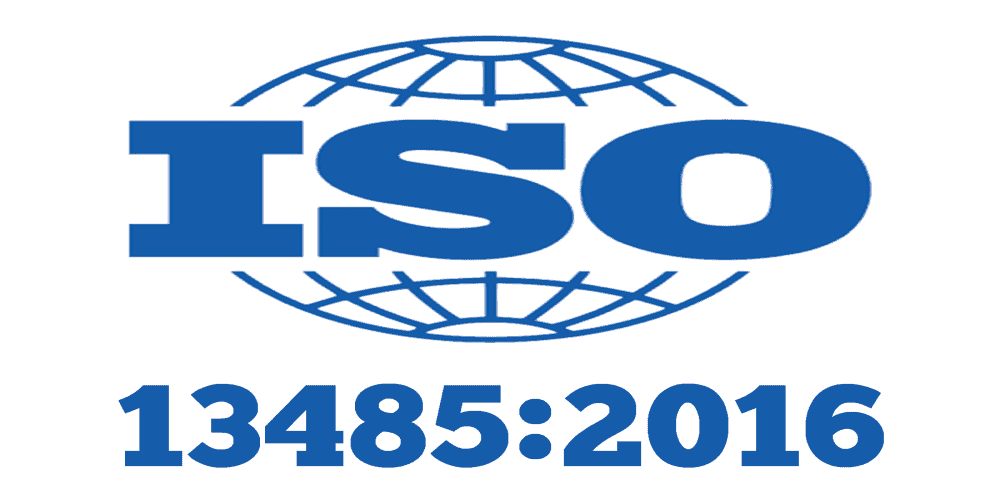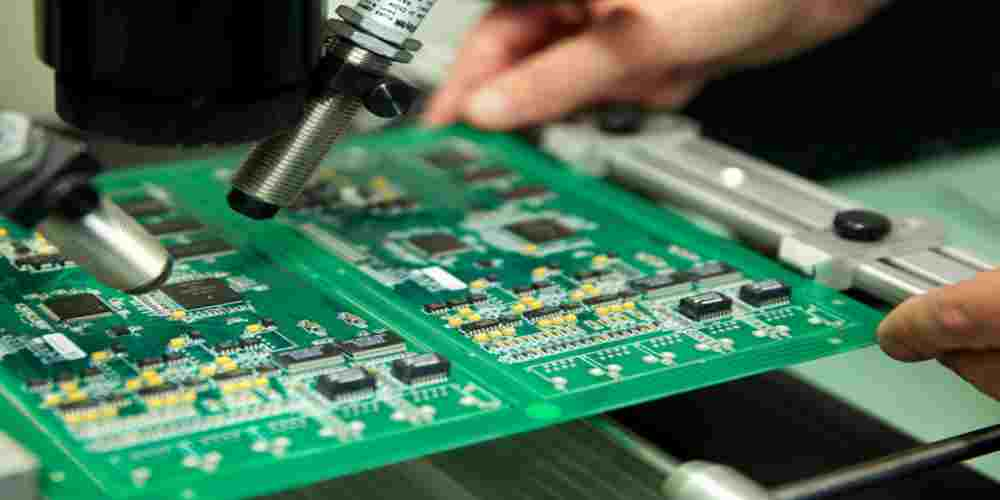ISO 13485 is a globally recognized standard for quality management systems in medical device manufacturing. As the medical device industry continues to grow, electronics manufacturing companies are increasingly seeking to comply with ISO 13485 to ensure compliance with regulatory requirements and to meet customer expectations.
ISO 13485 certification for electronics manufacturing requires companies to implement a quality management system that focuses on product safety, reliability, and customer satisfaction. This standard outlines the requirements for design and development, production, installation, and servicing of medical devices, with a particular focus on risk management and traceability. By implementing an ISO 13485-certified quality management system, electronics manufacturing companies can demonstrate their commitment to producing safe and reliable medical devices, which can help them gain a competitive advantage in the market.

Overview of ISO 13485
ISO 13485 is a quality management system standard designed specifically for medical device manufacturers. The standard outlines the requirements for an effective quality management system that ensures the safety, reliability, and quality of medical devices.
The standard is based on the ISO 9001 quality management system standard, but with additional requirements specific to the medical device industry. ISO 13485 covers all stages of the medical device lifecycle, from design and development to production, installation, and servicing.
ISO 13485 certification is not mandatory for medical device manufacturers, but it is often required by regulatory bodies in many countries. Certification demonstrates that a company has implemented an effective quality management system and is committed to ensuring the safety and efficacy of its products.
Some key benefits of implementing an ISO 13485 quality management system include:
- Improved product quality and reliability
- Enhanced customer satisfaction
- Increased efficiency and productivity
- Compliance with regulatory requirements
- Reduced risk of product recalls and liability issues
Overall, ISO 13485 is an essential standard for medical device manufacturers who want to ensure the safety and quality of their products and meet regulatory requirements.
Electronics Manufacturing and ISO 13485
ISO 13485 is an international standard that specifies the requirements for a quality management system (QMS) for medical devices. The standard is applicable to all organizations involved in the design, development, production, installation, and servicing of medical devices. Electronics manufacturing is an important part of the medical device industry, and it is essential to understand how ISO 13485 applies to this sector.
Quality Management System Requirements
The QMS requirements of ISO 13485 are designed to ensure that medical devices are safe, effective, and meet customer and regulatory requirements. The standard requires organizations to establish and maintain a QMS that is appropriate for the specific medical device they produce. The QMS must include policies, procedures, and processes that cover all aspects of the organization’s operations, including design and development, production, and service provision.
Design and Development
The design and development requirements of ISO 13485 are intended to ensure that medical devices are designed and developed in a manner that meets customer and regulatory requirements. The standard requires organizations to establish and maintain a design and development process that includes planning, inputs, outputs, review, verification, validation, and transfer.
Production and Service Provision
The production and service provision requirements of ISO 13485 are intended to ensure that medical devices are produced and serviced in a manner that meets customer and regulatory requirements. The standard requires organizations to establish and maintain a production and service provision process that includes planning, control, monitoring, and measurement.
Monitoring and Measurement
The monitoring and measurement requirements of ISO 13485 are intended to ensure that medical devices are monitored and measured in a manner that meets customer and regulatory requirements. The standard requires organizations to establish and maintain a monitoring and measurement process that includes the monitoring and measurement of product, processes, and the QMS.
Risk Management
The risk management requirements of ISO 13485 are intended to ensure that medical devices are designed, developed, produced, and serviced in a manner that minimizes the risk of harm to patients, users, and others. The standard requires organizations to establish and maintain a risk management process that includes risk analysis, risk evaluation, risk control, and risk communication.
Regulatory Requirements
The regulatory requirements of ISO 13485 are intended to ensure that medical devices comply with applicable regulatory requirements. The standard requires organizations to establish and maintain a regulatory requirements process that includes the identification, interpretation, and implementation of applicable regulatory requirements.
Supplier Management
The supplier management requirements of ISO 13485 are intended to ensure that the organization’s suppliers provide products and services that meet customer and regulatory requirements. The standard requires organizations to establish and maintain a supplier management process that includes the selection, evaluation, and monitoring of suppliers.
In conclusion, electronics manufacturing plays a critical role in the medical device industry, and ISO 13485 provides a framework for ensuring that medical devices are safe, effective, and meet customer and regulatory requirements. By implementing the QMS requirements of ISO 13485, organizations can ensure that their electronics manufacturing processes meet the highest standards of quality and compliance.
Benefits of ISO 13485 for Electronics Manufacturing

ISO 13485 is an international standard that outlines the requirements for a quality management system (QMS) for medical devices. Electronics manufacturers that implement the ISO 13485 standard can benefit from improved processes, increased efficiency, and better product quality. Here are some of the key benefits of ISO 13485 for electronics manufacturing:
Improved Quality Management
One of the primary benefits of ISO 13485 is that it provides a framework for quality management. By implementing the standard, electronics manufacturers can establish and maintain a QMS that is designed to meet the needs of the medical device industry. This can help to ensure that products are consistently manufactured to meet customer requirements and regulatory requirements.
Increased Efficiency
ISO 13485 requires electronics manufacturers to identify and manage their processes in a systematic way. This can help to eliminate waste, reduce errors, and improve overall efficiency. By implementing the standard, manufacturers can streamline their operations and reduce costs, which can help to improve profitability.
Enhanced Customer Satisfaction
ISO 13485 requires electronics manufacturers to focus on customer satisfaction and to continually improve their products and services. By implementing the standard, manufacturers can better understand their customers’ needs and expectations, and can work to meet or exceed them. This can help to increase customer loyalty and improve the manufacturer’s reputation in the marketplace.
Access to New Markets
ISO 13485 is recognized globally as a standard for quality management in the medical device industry. By implementing the standard, electronics manufacturers can demonstrate their commitment to quality and their ability to meet customer and regulatory requirements. This can help to open up new markets and opportunities for the manufacturer, both domestically and internationally.
Overall, implementing the ISO 13485 standard can provide significant benefits for electronics manufacturers that are involved in the medical device industry. By improving quality management, increasing efficiency, enhancing customer satisfaction, and accessing new markets, manufacturers can improve their bottom line and gain a competitive advantage in the marketplace.
Implementation Process

Gap Analysis
Before implementing ISO 13485 in electronics manufacturing, it is important to conduct a gap analysis to identify areas where the organization does not meet the standard’s requirements. This analysis will help to determine the necessary changes required to meet the standard’s requirements.
Documentation and Training
Documentation is a critical aspect of ISO 13485 implementation. The organization must create and maintain documents that demonstrate compliance with the standard’s requirements. It is also essential to provide training to staff to ensure they are aware of the standard’s requirements and how to implement them.
Internal Audits
Internal audits are a crucial part of the implementation process. They help to identify any nonconformities and ensure that the organization is meeting the standard’s requirements. The internal audit should be conducted by trained auditors who are independent of the area being audited.
Certification Audit
The certification audit is the final step in the implementation process. The organization must demonstrate compliance with the standard’s requirements to the certification body. The certification body will then issue the ISO 13485 certificate if the organization meets the standard’s requirements.
In conclusion, implementing ISO 13485 in electronics manufacturing requires a thorough understanding of the standard’s requirements and a commitment to meeting them. Conducting a gap analysis, creating documentation, providing training, conducting internal audits, and passing the certification audit are all critical steps in the implementation process.

